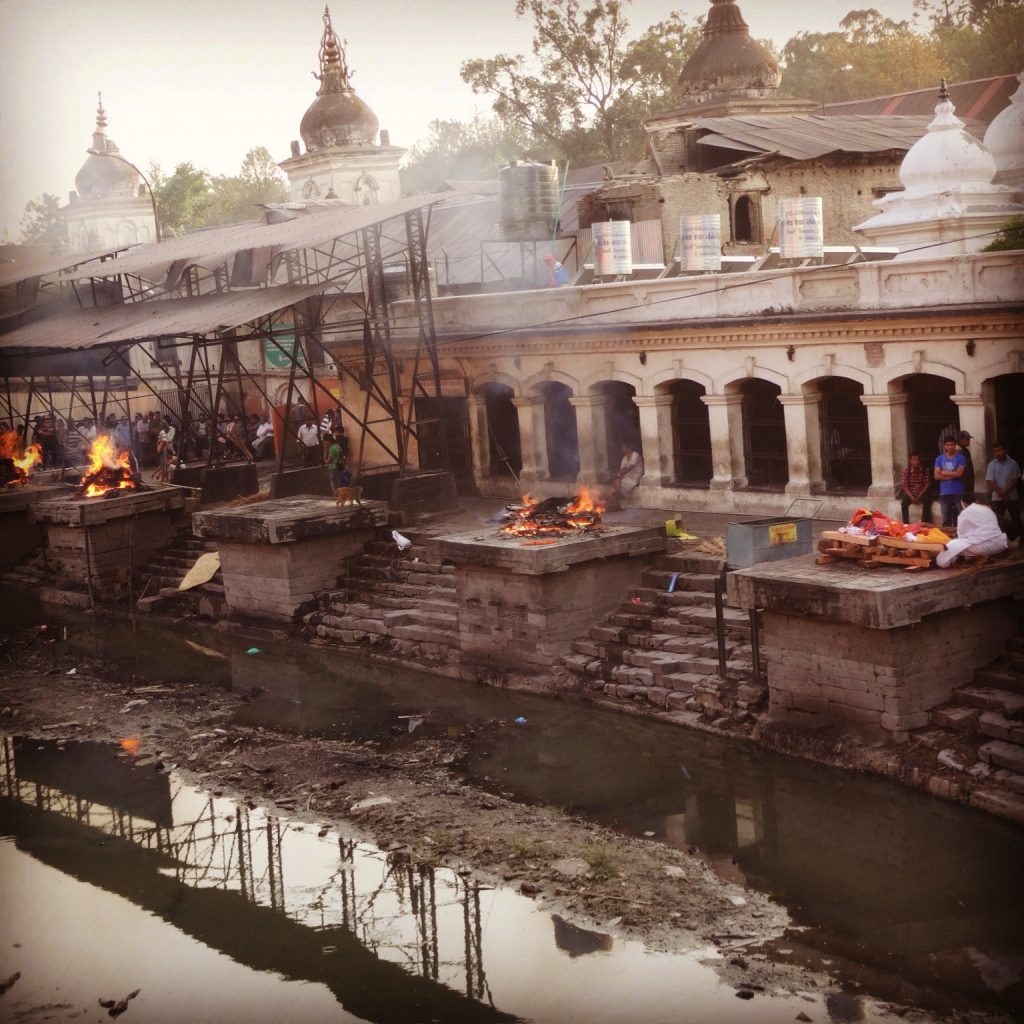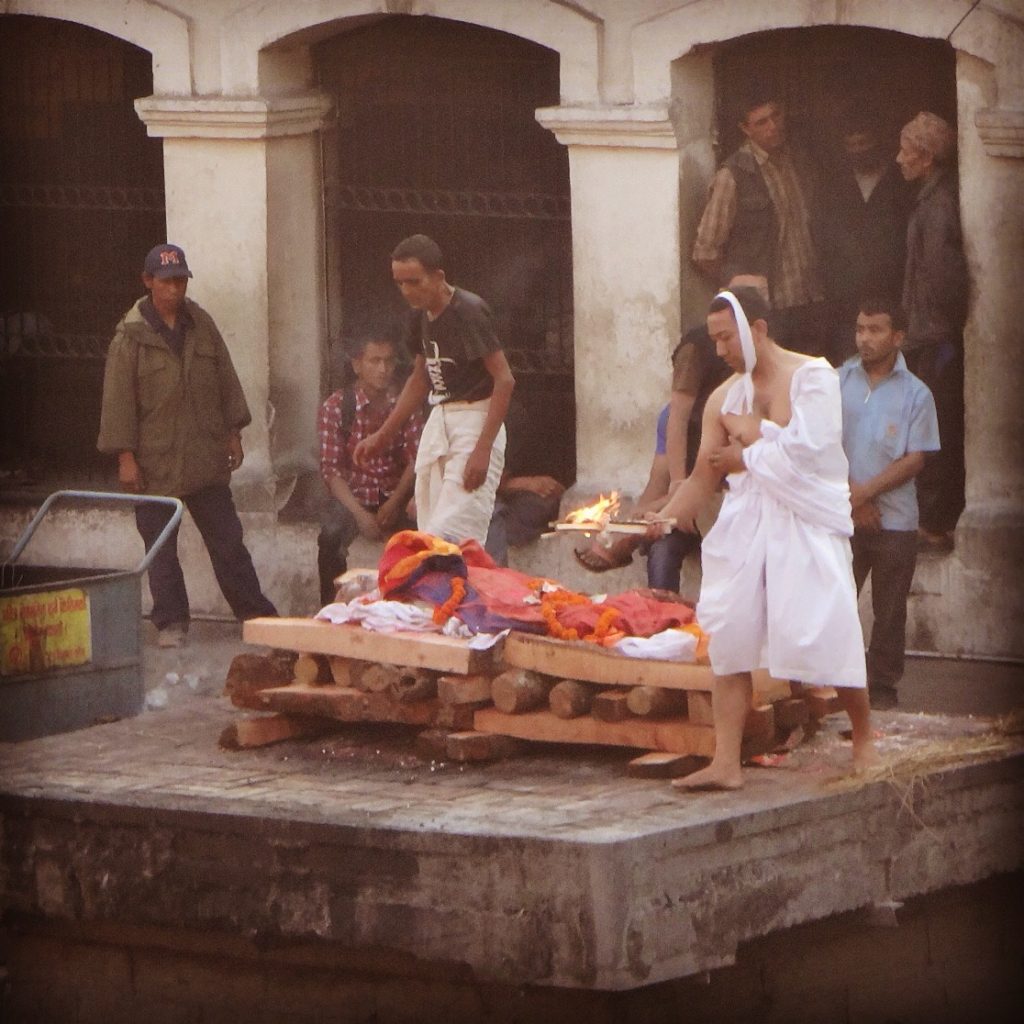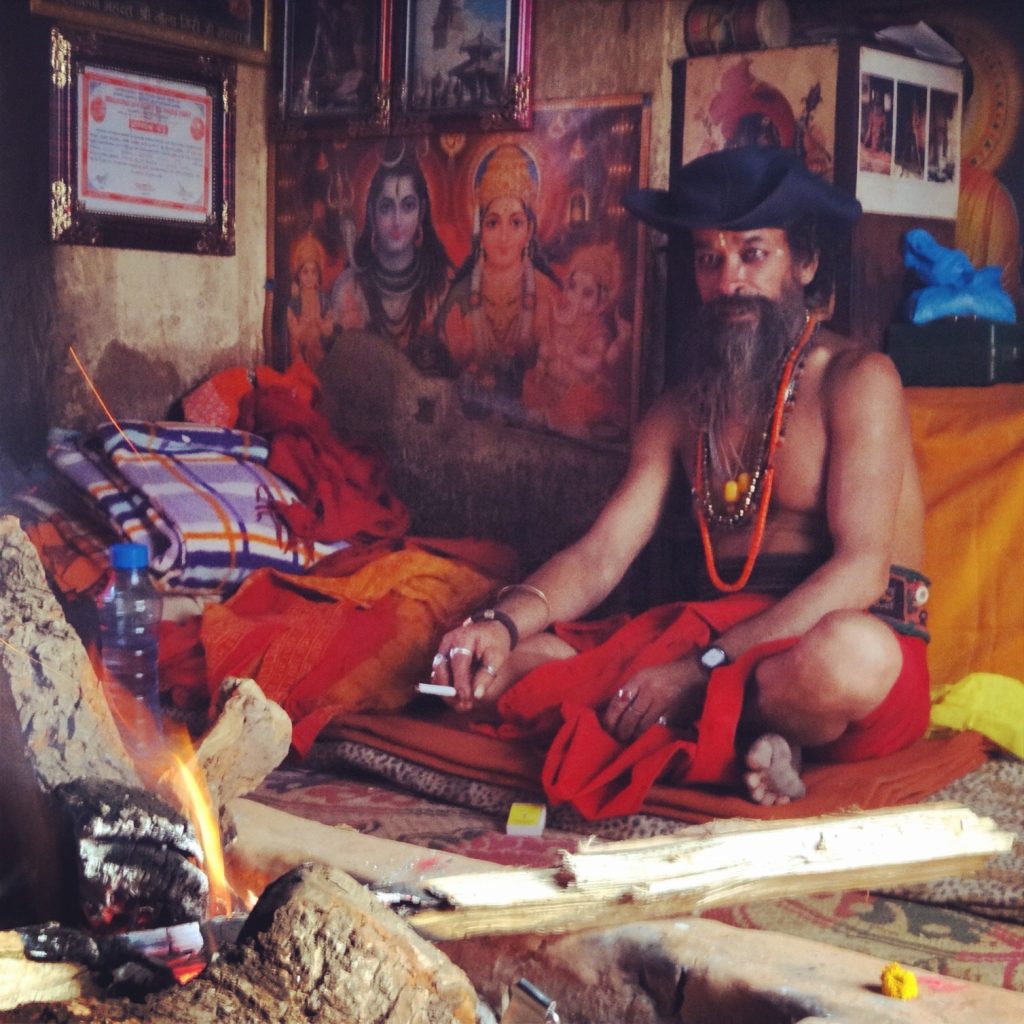
“In silence lies maturity; a sense of the timeless where wisdom meets reverence.”
To the left, is a Nepali shaman. As a man of spirituality, he has left our realm, making a vow of silence as he focuses on his meditations and guides the dead into the afterlife. For some holy men, these vows can last as long as a dozen years.

Located along the Bagmati River of Kathmandu, lies the funeral pyres of Pashputinath temple, where the dead are cremated.

The Bagmati river eventually joins the Ganges, which is considered one of the holiest bodies of water on this planet. Like its currents, the pyres here are constantly alit, symbolizing the ebb and flow of human life, as we realize how transient our existence is.
But, for Hindus, death is a process of life, one serving to balance the other.
The temple here honors Shiva, the Hindu Lord, god of destruction and transformation; underlying Hindu beliefs in reincarnation and karma.

Marigold flowers surround the body, which are commonly displayed for all ceremonial occasions in this region and India. To Hindus, marigolds are considered the “flower of the soul,” and are a sign of auspiciousness and trust in the divine.
The crowds here are quiet and respectful, a mixture of the bereaved, locals, and tourists.

The oldest son, if there is one, will walk around the pyre then light the kindling near the deceased’s forehead, which is symbolically important since Hindus believe from the mouth is where our spirit is released.
Once the body is lit, it will be covered with wet straw, which creates smoke and conceals the body from view during the cremation process. When this process is done, the family will collect the remaining ashes and scatter them into the river below, thereby finalizing the purification process for the deceased’s soul.
Having traveled here years ago, I do not remember how I got here or what I did afterwards. Nor do I remember what I did the day before or after. I do remember witnessing this process however. Even if one is not religious or a Hindu, there is a certain beauty and reverence that underlies the process of death in ancient cultures, as you realize these sacred rites have existed for thousands of years.
These types of moments are unique in the sense that you get a chance to glimpse into the lives of those so different from your contemporary western upbringing. I first tried to learn more about Hindu customs to get an idea of what I was witnessing, then I thought about what my life would be like if I had been raised with such beliefs?
Such thoughts make you question your own religious background and upbringing, not in a negative manner, but more so you begin to ponder if there are other equally valid interpretations to life beyond the scope you were born into.
Though I may not know much about spiritual devotion, I will respect most near anyone who has given up their worldly life and made a vow of silence for years on end. His insights into humanity will vastly differ from my own.
Not all of the holy men here possess such devotion however. Like certain preachers in the west, some are more in it for the hustle; earning their livelihood from tourist donations. I do not view such holy men as negative either. Instead, I give them a grin and a smile, as they remind me how much we still share in common across cultures.

“Some are in it for the faith, others for the grind; Some want a piece, while others want peace of mind.”